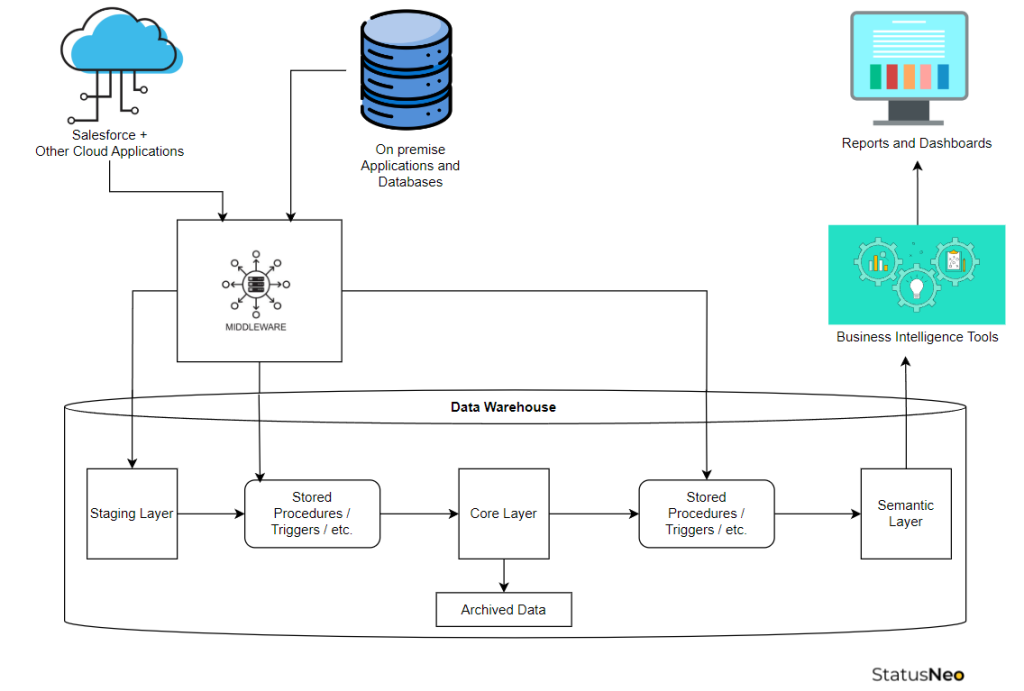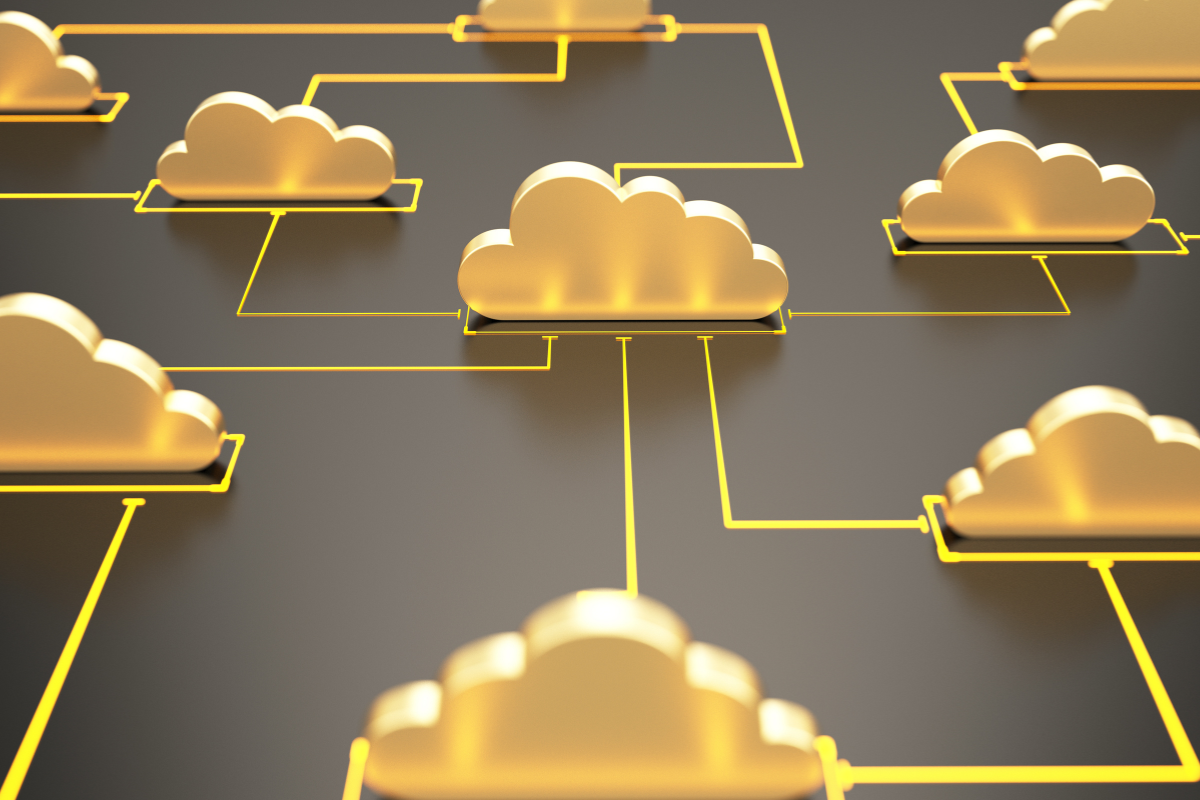Middleware and Warehouse Relationship with Salesforce
In the current business realm, managing and capitalizing on customer data efficiently is paramount. Salesforce, a well-known CRM platform, is influential in this area as it assists companies in integrating their sales, marketing, and customer service operations. However, to fully exploit the potential of Salesforce and enhance data management, integrating it with middleware and data warehousing solutions is critical.
Salesforce: The Hub of Customer Data
Salesforce acts as the main platform for handling interactions with customers. It stores important information such as customer profiles, interactions, purchases, and other relevant data. Salesforce has modules and tools to easily collect, arrange, and analyze this data, allowing businesses to make informed decisions and provide customized experiences for their customers.
The Need for Middleware
Salesforce is great for managing customer data within its system, but many companies have data spread across various systems and applications. This can be problematic because it can make it difficult to access and use data efficiently, and it can lead to a disjointed customer experience. Middleware can be used to solve this problem by connecting different systems and applications and allowing them to exchange data. This makes it easier to access and use data from different sources, and it can also help to streamline business processes and improve customer experiences.
Middleware functions as a critical intermediary between various systems, fostering smooth communication and data exchange. It serves as a bridge, connecting Salesforce to a diverse range of applications such as ERP systems, marketing automation platforms, legacy databases, and third-party APIs. Through its connectivity capabilities, middleware enables seamless data flow, eliminating isolated data silos. This unification facilitates a comprehensive and holistic view of customer information, enhancing business decision-making and operational efficiency.

Integration Scenarios with Middleware:
Middleware enhances Salesforce’s capabilities in various integration scenarios:
- Bi-Directional Data Synchronization: Middleware allows the automatic and continuous exchange of data between Salesforce and external systems in both directions. This means that changes made in one system are automatically mirrored in the other systems, ensuring that they are always up-to-date.
- Real-Time Data Updates:
- Middleware supports real-time data updates from Salesforce to other integrated systems, ensuring that any changes in Salesforce (such as customer information or order changes) are promptly reflected in those systems. This is especially useful in situations requiring immediate data revisions, such as inventory management or customer service.
- Custom Business Logic Integration: Middleware allows companies to create customized solutions and modify data during the integration process, ensuring it fits their unique needs and business rules.
- Event-Based Integration: Middleware offers event-driven integration. This means that an action or occurrence in one system triggers a related action in another system. For instance, when a new lead is created in Salesforce, it can automatically initiate a marketing campaign in a marketing automation tool.

Data Warehousing: Unlocking Insights
Salesforce’s Einstein Analytics offers robust analytics capabilities, but many organizations seek a centralized data repository for advanced analytics and reporting. Here, data warehousing comes into play. A data warehouse serves as a central hub that collects data from multiple sources for analysis and reporting purposes. It enables organizations to store vast amounts of historical data in a structured format, specifically optimized for complex queries and analytics.
Salesforce and Data Warehousing Integration
Integrating Salesforce with a data warehouse enables organizations to:
- Unified Data Repository: Salesforce integration with a data warehouse merges customer data from Salesforce with other operational and transactional data sources into a central location. This creates a comprehensive data repository that supports data analysis across various systems.
- Enhanced Analytics: The integration allows organizations to use the advanced analytics capabilities of the data warehouse. With complex queries, predictive analytics, and machine learning algorithms, businesses can uncover valuable insights, trends, and patterns hidden within the combined data. This empowers decision-makers with data-driven insights to improve business performance.
- Scalability and Performance: Data warehouses allow organizations to handle large amounts of data and numerous user requests concurrently, making them scalable and high-performing.
- Historical Data: Data warehouses keep historical data for extended periods, enabling organizations to track changes over time, spot patterns and correlations, and evaluate performance.
Salesforce, middleware, and data warehousing work together to help businesses get the most out of their customer data. Middleware connects Salesforce to other systems, keeping data consistent and up-to-date. Data warehousing stores data in a central location for analysis and reporting, allowing businesses to make informed decisions. By using these technologies together, businesses can become more efficient, flexible, and competitive in today’s data-driven world.
Here is the link to my previous blog: Sustainability & Advancing Green Technology








